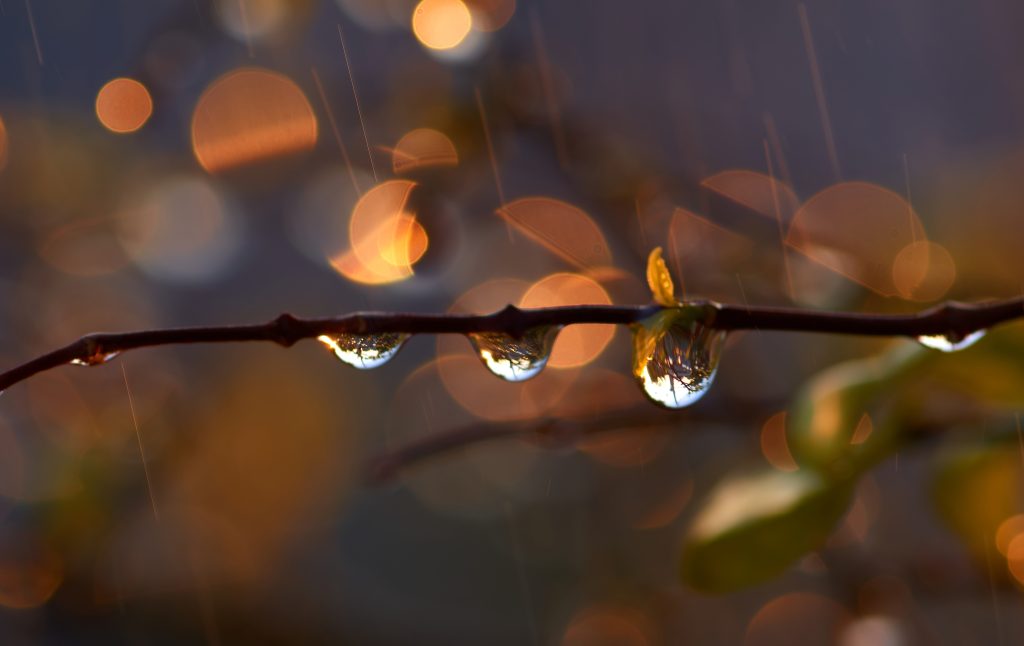We usually associate drought with summer – with parched lawns, wilting plants, and the need for frequent watering. However, we must remember that the problem of soil water deficiency affects all seasons. Although autumn is often perceived as a time of frequent rains and a respite from gardening, it is actually a crucial time to prepare the garden and farm for the coming season. Now is the time to take steps to better retain water, store it, and improve plant health in the coming months.
Autumn: Our Ally in the Fight Against Drought
Why is autumn so important? First and foremost, it’s a time when soil naturally regenerates. After a busy growing season, the soil is often depleted and less able to retain water, but autumn agronomic practices help rebuild its structure and fertility. Furthermore, autumn is the season for rainfall, which, with skillful management, can be retained and stored for the following months.
In practice, this means that every drop of rain that doesn’t drain into a sewer or ditch, but soaks into the soil or ends up in a retention pond, will be working to benefit our garden come spring and summer. It’s worth remembering that discharging rainwater into the sanitary sewer system is not only a waste of a valuable resource but also a violation of the law and may result in a fine of up to 10,000 PLN or imprisonment. This is because this activity leads to overloading of the sewage system, contamination of sewage treatment plants and may result in flooding of basements and properties with rainwater or sewage.
Soil as a Natural Water Reservoir
The first step in preparing your garden for drought is to take care of the soil structure. Healthy, humus-rich soil acts like a sponge – absorbing water and slowly releasing it to plants. To enhance its water-retention properties, it’s worth implementing a few simple measures in the fall that are easy to implement in your home garden:
- Mulching flowerbeds and borders – cover the soil with a layer of leaves, bark, sawdust, straw, or wood chips. Mulch reduces water evaporation and protects roots from freezing in winter. Furthermore, this layer decomposes over time, enriching the soil with humus. It can be used under shrubs, fruit trees, perennials, or in the vegetable garden after harvest.
- Compost – a natural fertilizer that improves soil structure, increases its water capacity, and provides nutrients. In the fall, it’s a good idea to spread a thin layer of compost over the flowerbeds or mix it with the topsoil in the vegetable garden. Regularly applying compost is one of the simplest and most effective methods for improving water retention in the garden.
- Cover crops – where the soil remains bare after the season, it’s a good idea to protect it. In a vegetable garden or orchard, so-called catch crops, such as phacelia, clover, or mustard, are effective – their roots loosen the soil and improve its structure. In an ornamental garden, it’s worth planting cover crops, such as periwinkle, Japanese groundcover, creeping bugle, or heuchera. They protect the soil from drying out, limit weed growth, and create a natural, green protective layer.
Rain Garden: Simple and Effective Retention
Rain gardens, or specially designed flowerbeds where rainwater collects and slowly percolates into the soil, are becoming increasingly popular. This solution is suitable for any garden owner, as it doesn’t require significant financial outlays and offers enormous benefits.
A rain garden acts as a natural filter – water from gutters, driveways, or patios flows into a specially prepared depression, where it is gradually absorbed by the soil and plants. This reduces the risk of flooding during heavy rainfall and simultaneously stores water for the future.
Plants that are tolerant of variable moisture conditions (both periodic flooding and dry soil) are ideal for such a garden. They are selected according to the zone – the middle (moistest), the intermediate zone, and the edge (drier).
Moist zone (bottom of the basin) – here the soil remains wet for a long time after rain:
- Yellow and Siberian iris (Iris pseudacorus, Iris sibirica)
- Sedges (Carex flacca, Carex acutiformis, Carex ornitophoda, Carex riparia)
- Tractate loosestrife (Lysimachia nummularia)
- Water mint (Mentha aquatica)
Intermediate zone (periodically wet):
- Funkia (Hosta)
- Astilbe Arendsii Group
- Garden daylily (Hemerocallis)
River zone (drier) – the driest part of the rain garden – periodic and short-term flooding:
- Catnip (Nepeta faassenii)
- Downward sage (Salvia nemorosa)
Choosing the right species makes a flowerbed not only practical but also visually appealing – full of color and fragrance.
Lawn or Wildflower Meadow?
A traditional lawn, especially in the form of an English green carpet, is very demanding in terms of water consumption. In summer, it requires frequent watering, and during prolonged dry spells, it easily turns into a scorched patch. Wildflower meadows not only retain moisture better but are also ideal for pollinating insects, thus increasing biodiversity and adding charm and color to our yards. Importantly, they also require less maintenance – they don’t need to be mowed as often as a lawn, saving you additional time and energy.
In the fall, it’s worth considering not only converting sections of your lawn to a wildflower meadow but also preparing the soil for sowing. First, loosen the soil, remove weeds, and mix the soil with compost, which will improve its water-holding capacity. Then, sow a mixture of drought-tolerant plant seeds – autumn rains and moist soil will help them establish well before winter. If you’re leaving sections of a traditional lawn, you can dethatch and reseed the gaps to strengthen the grass and improve its drought resistance in summer.
Retention on a Farm Scale
Drought is not only a problem for home gardens, but also, to a large extent, for farms. In autumn, we should implement solutions that improve the land’s ability to retain water, such as:
- constructing small retention reservoirs or ponds
- creating green belts and in-field shelterbelts that slow water runoff
- reducing paved areas that promote surface runoff
Each of these actions, though they may seem small on an individual farm scale, has a significant impact on improving water balance on a national scale.
Economy and Ecology Go Hand in Hand – Even in Autumn
Autumn is the perfect time to consider rational water management. Although watering is no longer as intense as in summer, the economic aspect should not be forgotten. Using tap water on your plot still generates costs, and harvesting autumn rainfall is a simple way to generate real savings in the following season.
Moreover, rainwater – chlorine-free and often softer than tap water – benefits plants that require gentler watering before their winter dormancy.
In the broader context, our daily decisions have implications for the entire economy. Saving and using water wisely helps mitigate the effects of drought next year, stabilizing agricultural production costs and food prices. Preparing to conserve water in the fall is therefore an investment in a more sustainable and economical future.
Think about Tomorrow Today
Autumn is a time for planning and reflection, but also an excellent time to act. Every gardener, allotment gardener, or farmer has an impact on how their surroundings will cope with drought. It’s worth starting with simple steps: mulching, composting, establishing a rain garden, or removing part of the lawn. Counteracting the effects of drought in our gardens begins in the fall.

 PL
PL

